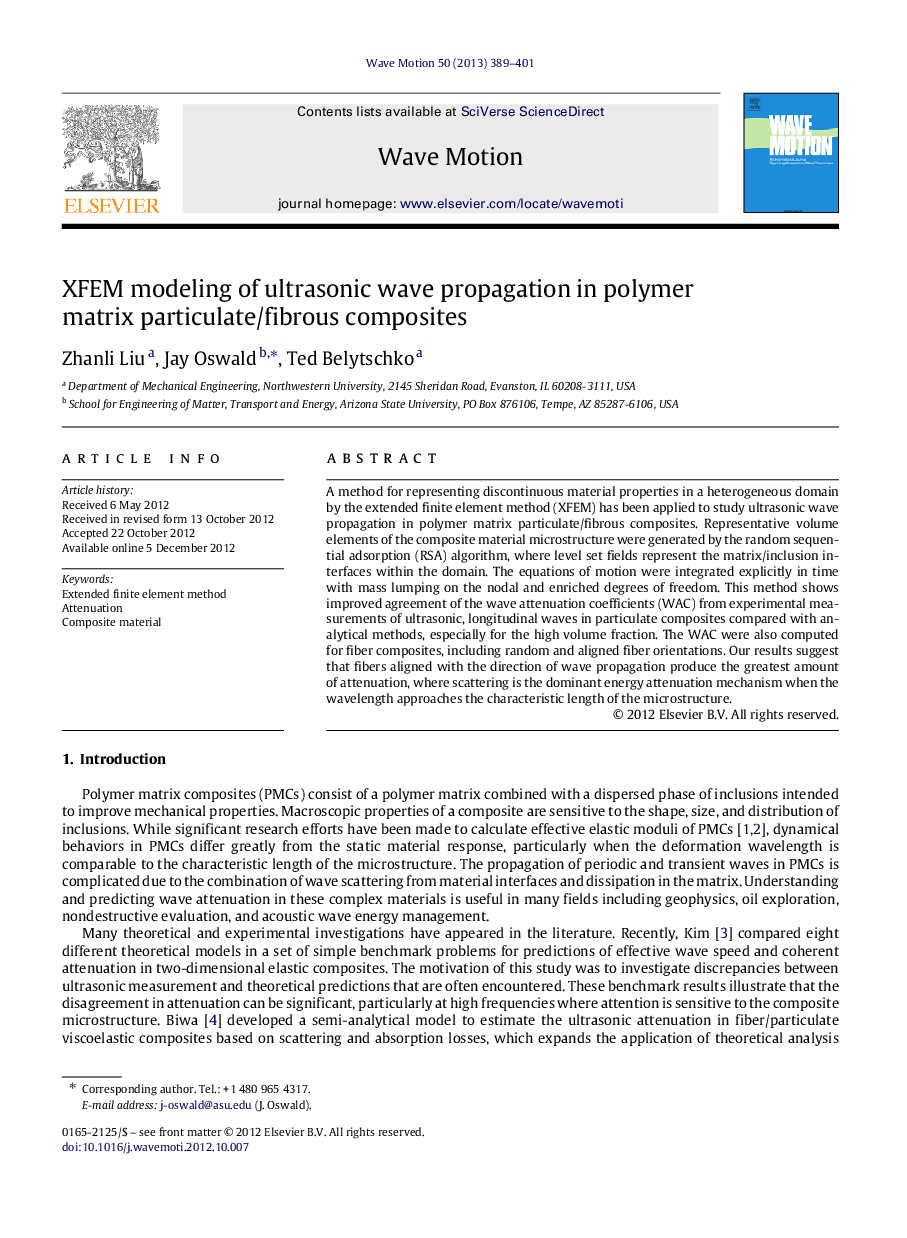| Article ID | Journal | Published Year | Pages | File Type |
|---|---|---|---|---|
| 1900214 | Wave Motion | 2013 | 13 Pages |
A method for representing discontinuous material properties in a heterogeneous domain by the extended finite element method (XFEM) has been applied to study ultrasonic wave propagation in polymer matrix particulate/fibrous composites. Representative volume elements of the composite material microstructure were generated by the random sequential adsorption (RSA) algorithm, where level set fields represent the matrix/inclusion interfaces within the domain. The equations of motion were integrated explicitly in time with mass lumping on the nodal and enriched degrees of freedom. This method shows improved agreement of the wave attenuation coefficients (WAC) from experimental measurements of ultrasonic, longitudinal waves in particulate composites compared with analytical methods, especially for the high volume fraction. The WAC were also computed for fiber composites, including random and aligned fiber orientations. Our results suggest that fibers aligned with the direction of wave propagation produce the greatest amount of attenuation, where scattering is the dominant energy attenuation mechanism when the wavelength approaches the characteristic length of the microstructure.
► We have applied the extended finite element method for wave propagation in heterogeneous media. ► This method is accurate for predicting attenuation and wave speed at high volume fractions. ► We report an effective mass lumping scheme necessary for efficient computation.
